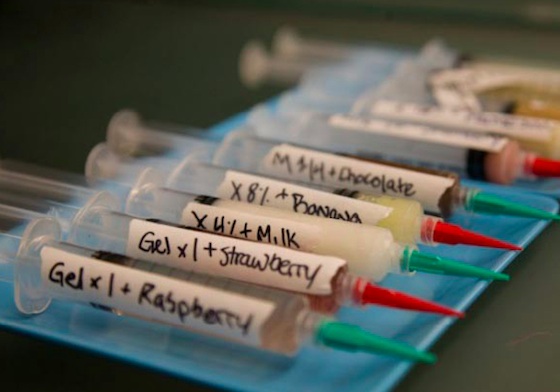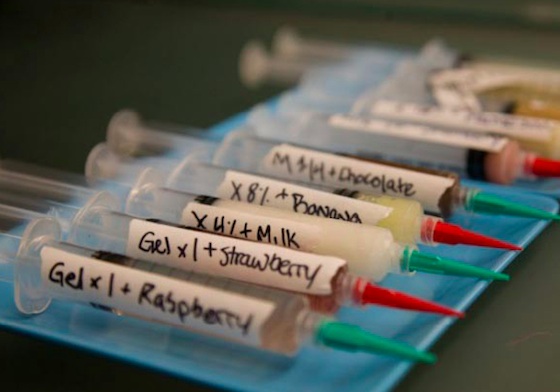3D Printed Food
Additive manufacturing, the process whereby 3D printers are utilised in a new paradigm of manufacturing


Additive manufacturing, the process whereby 3D printers are utilised in a new paradigm of manufacturing, has broken out of the box of rapid prototyping and may soon transform the food of the future with 3D printed edible delights.
The printer ‘inks’ are essentially foods in fluid form and printing a main course works in a similar way to other additive manufacturing methods: the food is designed from an electronic blueprint created in FabApps. This provides a huge scope for design; totally new textures can be created through stochastic printing and new flavours can be fashioned by varying the chemical composition of a dish (the paradoxical deliciousness of blue cheese and chocolate is easily understood via the ingredients’ chemical compatibility).
An indication of how rapidly transformative additive manufacturing is becoming is that there is already talk of marketing inexpensive models ready for entry level consumers. Technology startup Essential Dynamics aim to market a 3D food printer that will retail for $1,000 initially. Lakshmi Sandhana, the man behind Essential Dynamics, believes that 3D food printing we will go from novelty…to utility…to indispensability.”
We wonder what the benefit of a low-cost food printer is before we’ve even gotten a taste for 3D printed dishes. So far 3D printing’s appeal lies in how it levels the playing field, democratising disciplines presided over by those with specialist knowledge. Aside from the tantalising prospect of remixing recipes from first principles there remains a question mark about whether such technology fosters deeper engagement with food than guerrilla gardening and self-subsistence movements among consumers.



Discussion